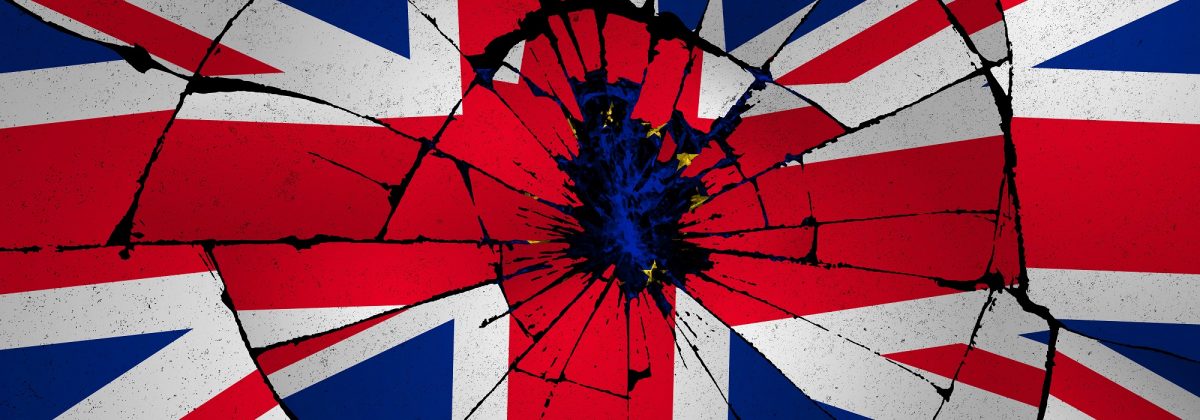Theresa May’s Resignation Might Not Be Good for GBP

A country’s leader defined and defeated by Brexit, UK Prime Minister Theresa May announced her resignation in May 2019, bringing a new surge of uncertainty to the financial markets. Just a month before that, the EU had granted the UK a significant extension from the original Brexit deadline, right up to October 31, 2019. Now, the UK needs to come up with a suitable withdrawal agreement that can appease both parties by October 2019.
Much is at stake now, as the UK looks for a new leader, whose capabilities to unite the country and the divided factions in parliament, in respect to Brexit, will be decisive for the global economy. Amidst all this chaos, stands the pound sterling, likely to bear the full brunt of the ongoing geo-political drama. PM May officially quit office on June 7, 2019, although she will take care of things until a new Prime Minister is elected by the Conservative Party. How will the GBP fare in this murky political climate?
Increased Volatility for the Pound Sterling
Surprisingly, the resignation of PM May saw the GBP soar against the EUD and USD. In the preceding 3 weeks, failing Brexit talks between the two major political parties in the UK, the Labor Party and the Conservative Party, had triggered a sharp sell-off in the sterling. The GBP/USD had fallen sharply from near 1.3200 to 1.2600, as a result. With the announcement of May’s resignation on May 24, 2019, the GBP received a boost, rising a little above 1.2700 against the USD, before falling back to a marginally higher 1.2672, since the start of the day.
The GBP also rose against the EUR, trading at 1.1357 and ending its longest losing streak against the currency since its inception. This was a sign of rising investor hopes that the appointment of a new country leader might lead to a soft Brexit or no Brexit at all. This boost was, however, short-lived. The GBP/USD went back to the 1.2500 support levels and EUR/GBP cooled off to 1.1313.
Reality has sunk in the markets, as PM May’s resignation points towards greater delays in Brexit negotiations. The new leader might have to make a difficult choice between a damaging second referendum and a no-deal Brexit. In fact, the world’s fifth largest bank, MUFG, predicts that the GBP might not recover its losses at all in 2019. The bank has slashed all its past projections, citing that the looming Conservative Party elections will have devastating effects on the pound sterling.
Future Political Uncertainties: Sustained Period of GBP Weakness
The change of leadership could alter the UK’s approach to the Brexit negotiations. There are currently 13 Tory politicians in the race to succeed PM May automatically, with early front-runner Boris Johnson strongly being backed by US President Trump. Trump and Johnson are dropping hints about future US-UK trade talks post the Brexit crisis.
On the other hand, the United States is already facing escalating trade tensions with China and Canada. While the prospect of trade talks with the US have been welcomed by many, experts are still concerned about the terms the UK might be forced to accept, in order to secure such a deal. Added to that, Boris Johnson is a staunch supporter of leaving the EU, deal or no deal.
Trade analysts are now of the opinion that if Boris Johnson becomes the next UK PM, the GBP might actually slide to 1.2000 against the USD.
On the other end of the spectrum is Foreign Secretary Jeremy Hunt, who believes in re-opening negotiations with the EU, in a bid to create a “different deal.” He aims at healing the fractured Conservative Party and avoiding the launch of a general election. His positive approach might spell good news for the GBP, but experts are not too hopeful about him coming to power.
What we see here is that traders need to not only prepare for the short-term effects of a new PM on the GBP markets, but also evaluate for the long-term, how the new leader will fare against opposition Labor candidate Jeremy Corbyn, in the possible general elections. Currently, a majority of the leading contenders favour a hard Brexit. Projections for the GBP are, therefore, not good.
The European Parliament elections of May 2019 have created further confusion. There seems to be a huge waning of support for both the Conservatives and Labor Party. Alternative anti-Brexit factions like Change UK, Greens and Liberal Democrats have gained ground. This shows how divided the country remains in terms of Brexit.
There has been a downward slide in the GBP/USD, both before and after the EU parliamentary elections, indicating that investors are hugely bearish on the pair. Why wouldn’t they be? The elections have added a new perspective to the UK’s political situation. There might be no overall winner in the future general elections and a further delay in Brexit negotiations. This could derail the GBP for good.
Traders Need to Brace Themselves for Volatility
In all possible situations, high volatility is expected for the GBP, up to the possible UK parliamentary elections. According to experts, the next leader will come from the same Eurosceptic wing of the Conservatives, leading to escalating tensions between the executive and the legislative wings of the government. This might trigger early general elections and greater potential for a second referendum or no-deal Brexit.
In all scenarios, the Brexit dilemma is not going to be resolved anytime soon.
While the pound sterling is likely to continue to depreciate against the US dollar and the euro, gold prices are likely to rise, leading to lower yields, since these two assets share an inverse relationship.
On a more positive note, the UK’s employment levels have been steady, as has been the nation’s economic growth. Investors can count on UK equities though, which offer industry-wide and geographical diversification, along with a 5% prospective dividend yield. For GBP traders, it’s likely to be a tough road ahead.
Reference Links
- https://www.poundsterlinglive.com/gbp-live-today/11459-pound-to-euro-and-dollar-mufg-forecasts
- https://www.euronews.com/2019/06/01/who-is-in-the-running-to-be-uk-s-next-prime-minister-and-what-s-their-view-on-brexit
- https://www.irishtimes.com/business/markets/pound-volatile-after-theresa-may-resigns-1.3903094
- https://www.yourmoney.com/investing/sterling-jumps-as-theresa-may-resigns/




